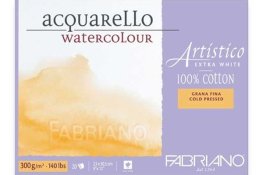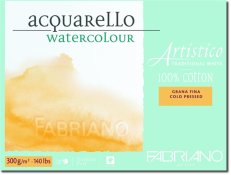NedL
Subscriber
I'm back in test mode for a few days instead of printing mode with salt prints.
I'm putting this here in case anyone is interested. If you want to suggest a different combination, or want me to try a different kind of paper, let me know.
Background:
My impression is that not very many people making salt prints these days try to get clean borders. Many people like to print with “dirty” black borders, or have brush strokes show. Other people cut out the finished print and mount it. Since not many prints have perfectly paper-white highlights, this means that if there is subtle fogging in the areas coated with silver nitrate, it could go unnoticed. My guess is that as long as the highlights are bright, most people are happy and would not notice very slight overall fogging... they'd assume the highlights were slightly printed in – which is a common way to know the print is done exposing. Subtle fogging becomes a problem if you want to print clean borders.
Some months ago Pdeeh made a salt print with a nicely masked border, and the white area around the print where the silver had been coated eventually fogged – well after the print was washed and dried. Recently I've been making prints with rubylith masking and paying close attention to the borders, and while they are mostly clean enough to look nice, I have not made any prints where the unexposed border area -- coated with silver nitrate but not exposed to light – is perfectly paper white upon close examination. Fortunately, with my favorite paper and salting it is a very subtle problem, but it would be nice to know more about it.
The other day I made this print which has egregious fogging. The highlights are obviously ruined. I'm sure any salt printer who made this print not be happy with it. It was on a paper and with a salting formula I hadn't tried before. It was on Magnani Mills Revere Platinum, used ½% sodium citrate, and used pigskin gelatin – all things I don't normally use. The stain increased throughout the process, visibly getting worse during washing. You can also see a known problem with this paper: the sizing caused blotches to appear during the wash stage.

With such an extreme example of fogging, I decided to try a series of tests to see what caused it, and maybe to learn more about fog in general.
The tests:
This morning I cut 2x2 inch pieces from each of 3 kinds of paper. I just finished salting each kind of paper 6 ways:
I'll expose each for about 5 minutes in the sun, so that there is:
One thing I don't have enough samples to control is temperature. The printing frame can get warm on a sunny day.... but I've made lots of prints with very little fog so at least that's not the cause of this extreme version of fogging. But it wouldn't surprise me if it is a factor in more subtle fogging.
BTW, it did occur to me that I can't dip my brush into silver nitrate between coating these, because some of the salt/gelatin coatings would carry over. So yesterday I bought a dozen inexpensive foam brushes. I'll coat a dozen at a time, without re-dipping into the silver nitrate, and then wash the brushes very carefully before coating more.
There is also a bit of a lesson here about alt processes. I know I've “preached” a little about using enough citric acid in salt prints to avoid fog. I did a series of careful tests with citric acid when I first started, and it made a big difference. But there are so many variables! Everyone who prints has different water, uses different salts and chemicals and papers, different humidity and temperature and source of UV... that's why reading about what others do is sometimes not very helpful; or what works for one person doesn't work for another. The only reliable way to learn is to try things yourself!
I'm putting this here in case anyone is interested. If you want to suggest a different combination, or want me to try a different kind of paper, let me know.
Background:
My impression is that not very many people making salt prints these days try to get clean borders. Many people like to print with “dirty” black borders, or have brush strokes show. Other people cut out the finished print and mount it. Since not many prints have perfectly paper-white highlights, this means that if there is subtle fogging in the areas coated with silver nitrate, it could go unnoticed. My guess is that as long as the highlights are bright, most people are happy and would not notice very slight overall fogging... they'd assume the highlights were slightly printed in – which is a common way to know the print is done exposing. Subtle fogging becomes a problem if you want to print clean borders.
Some months ago Pdeeh made a salt print with a nicely masked border, and the white area around the print where the silver had been coated eventually fogged – well after the print was washed and dried. Recently I've been making prints with rubylith masking and paying close attention to the borders, and while they are mostly clean enough to look nice, I have not made any prints where the unexposed border area -- coated with silver nitrate but not exposed to light – is perfectly paper white upon close examination. Fortunately, with my favorite paper and salting it is a very subtle problem, but it would be nice to know more about it.
The other day I made this print which has egregious fogging. The highlights are obviously ruined. I'm sure any salt printer who made this print not be happy with it. It was on a paper and with a salting formula I hadn't tried before. It was on Magnani Mills Revere Platinum, used ½% sodium citrate, and used pigskin gelatin – all things I don't normally use. The stain increased throughout the process, visibly getting worse during washing. You can also see a known problem with this paper: the sizing caused blotches to appear during the wash stage.
With such an extreme example of fogging, I decided to try a series of tests to see what caused it, and maybe to learn more about fog in general.
The tests:
This morning I cut 2x2 inch pieces from each of 3 kinds of paper. I just finished salting each kind of paper 6 ways:
- 2% salt
- 2% salt + ½% sodium citrate
- 2% salt + 1% ossein gelatin
- 2% salt + ½% sodium citrate + 1% ossein gelatin
- 2% salt + 1% pig skin gelatin
- 2% salt + ½% sodium citrate + 1% pig skin gelatin
I'll expose each for about 5 minutes in the sun, so that there is:
- an uncovered area
- an area coved by red rubylith ( in case sunlight getting through it is a factor )
- an area covered by black plastic
One thing I don't have enough samples to control is temperature. The printing frame can get warm on a sunny day.... but I've made lots of prints with very little fog so at least that's not the cause of this extreme version of fogging. But it wouldn't surprise me if it is a factor in more subtle fogging.
BTW, it did occur to me that I can't dip my brush into silver nitrate between coating these, because some of the salt/gelatin coatings would carry over. So yesterday I bought a dozen inexpensive foam brushes. I'll coat a dozen at a time, without re-dipping into the silver nitrate, and then wash the brushes very carefully before coating more.
There is also a bit of a lesson here about alt processes. I know I've “preached” a little about using enough citric acid in salt prints to avoid fog. I did a series of careful tests with citric acid when I first started, and it made a big difference. But there are so many variables! Everyone who prints has different water, uses different salts and chemicals and papers, different humidity and temperature and source of UV... that's why reading about what others do is sometimes not very helpful; or what works for one person doesn't work for another. The only reliable way to learn is to try things yourself!
Last edited:






